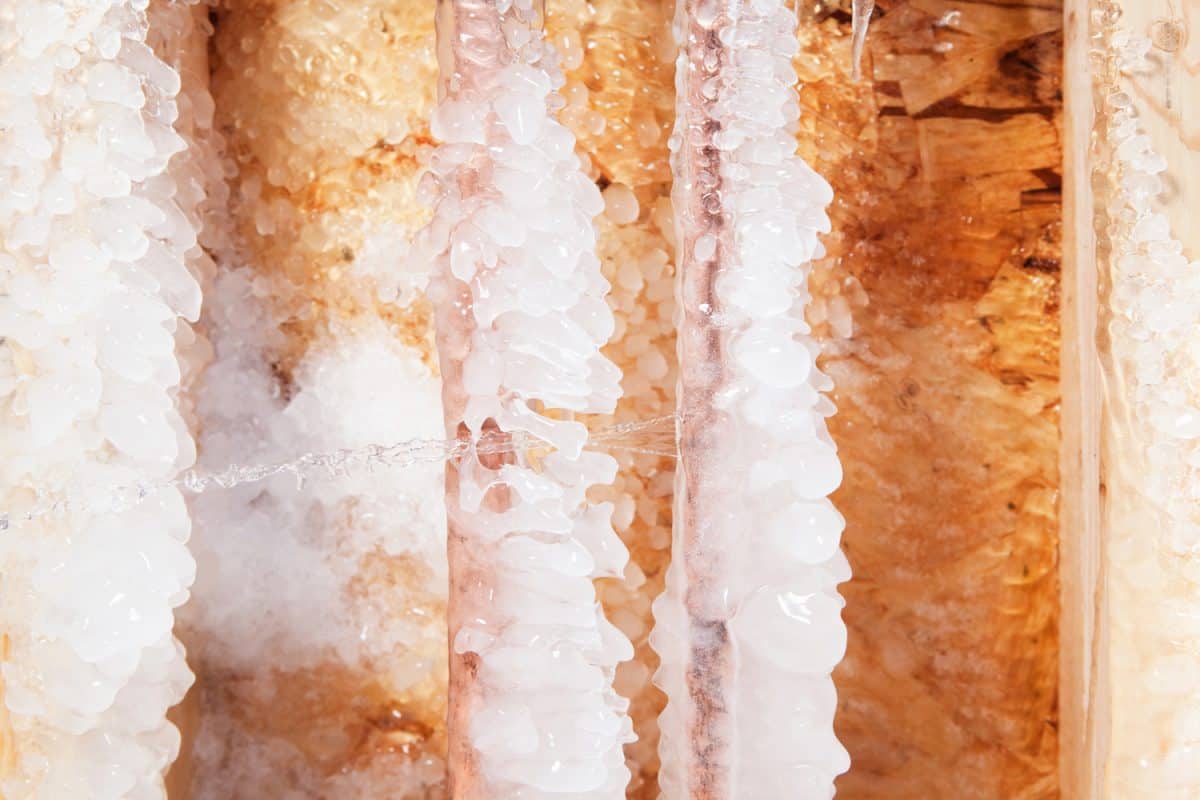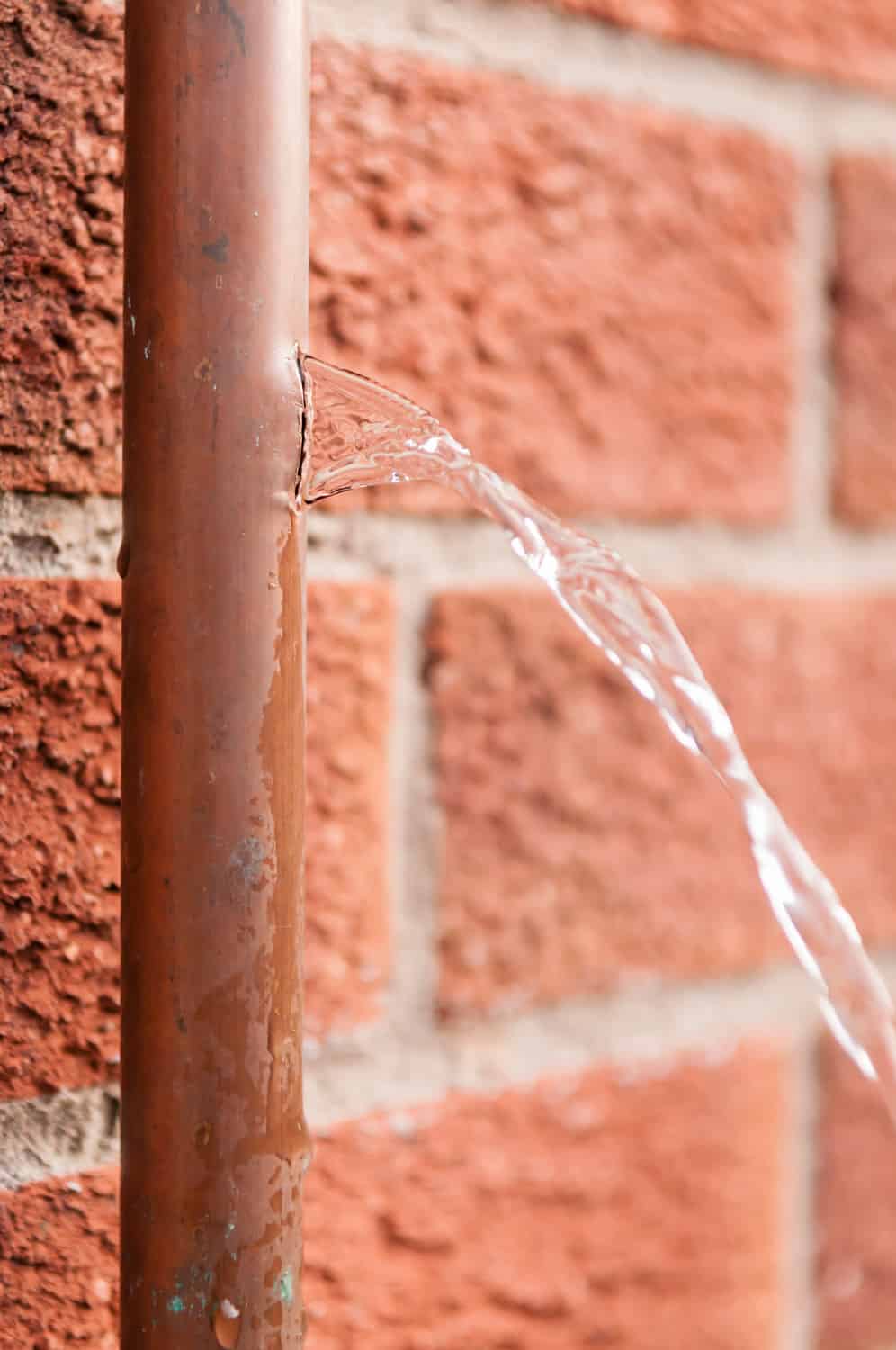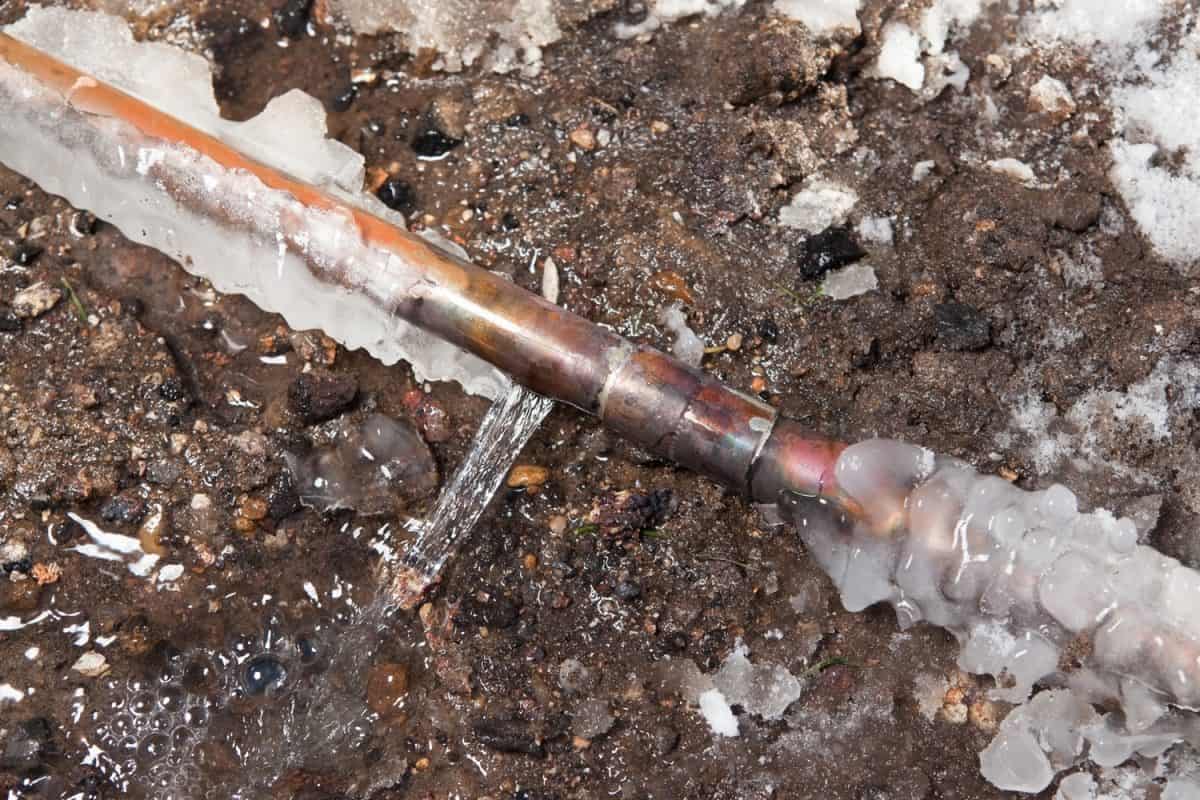Frozen pipes aren't only an inconvenience for homeowners. They can put one's life in danger and cause grave damage to property. That's why it is important to know what to do when winter comes and your copper pipes freeze. We've asked home experts, and here are their tips for thawing those pipes.
Apply heat continuously on your frozen copper water pipes using safe household items such as a hairdryer, heating pad, heat tape, and hot bath towels. You can also put a space heater and heat lamp near the affected area to help unfreeze the water. Make sure your faucet is on, and start thawing pipes near the side of the faucet to prevent the buildup of water pressure that could lead to bursting.
In the following sections, we'll share more tips and recommendations for unfreezing those water pipes. We'll also tell you why you should leave your faucet on when your pipes are frozen, how long the thawing process will take, and if copper pipes will burst when frozen. These are all important to know since this matter concerns your safety so keep on reading.

Thawing Frozen Copper Pipes
Water expands when it freezes. This is the reason why you can't put your soda or beer cans in the freezer for too long. They will explode because of their water content. Similarly, copper pipes, once they contain frozen water, will likely burst because of the added pressure due to the expansion of water.
But unlike your soda cans which will just splatter your freezer with this sweet beverage, a frozen copper pipe can cause great damage to your home and even put your life in danger once it bursts.

Good thing there are a lot of home remedies that you can do once you detect that your pipe is frozen. For starters, here are some products that are safe to use for you to be able to heat your copper pipes:
- hairdryer
- heating pad
- space heater
- heat lamp
- heat tape
- bath towels soaked in hot water
Use any of these items to heat your frozen copper pipes. You can also turn the heat up in the room by adjusting your thermostat level. Do not use a charcoal stove, kerosene or propane heater, a blowtorch, and other open flame devices, as they can cause a fire.
Gently Apply Heat
You can direct your hairdryer and heat lamp to the frozen portion while the heating pads, heat tapes, and bath towels can be wrapped around the pipes. You can place your space heater near the pipes. Just continue to apply heat until the pipes are unfrozen, and normal water pressure is restored. Copper is a good conductor of heat, so it'll make the thawing process easier and faster.
Open the Faucet
When heating the frozen pipes, do start at the faucet side, then make your way down the pipe. Make sure your faucet is open so that the thawed water has somewhere to go. Doing this the other way around would cause the buildup of water pressure and could make those pipes burst, which is what we're trying to avoid in the first place.
Monitor Thawing Process
Remember, you have to be proactive once you detect a frozen pipe in your house. Don't wait for them to thaw naturally, as it might take a long time. The longer your pipes are frozen, the greater is the risk of them bursting and causing damage to your home. Always make sure that someone's there to monitor the thawing process. Do not leave it unattended to avoid any untoward incident.
If you can't figure out which pipe is frozen, if it is out of your reach, or is hard to thaw, it is best to call a licensed plumber to do the job for you. They would also be able to detect if other pipes within your home are frozen.
Should you leave the faucet on if pipes are frozen?
You've probably heard this advice, too. Leave a faucet on when you have a frozen pipe. The dripping water is supposed to help melt the ice that has formed along the pipes and keep them from freezing.
However, science says that water can still freeze even when it is in motion. This is especially true when water is not able to move freely. So, a dripping faucet won't necessarily help melt the ice. It can also turn into ice when the temperature doesn't get any warmer for consecutive days.
It can, however, will help ease the buildup of pressure between the frozen (and therefore) blocked pipes and the faucet. This is how leaving it on will help you as you're thawing your water pipes.
When the pressure gets too much, the pipes will burst, and that's when havoc begins. It can cause heavy damage to your home and property. As long as the faucet is on, the pressure is relieved, and it will prevent pipes from bursting since the thawed water has somewhere to go which is out of the faucet.
The location of the faucet that you're turning on is also crucial. As much as possible, choose one that is farthest from the point where water enters your home. This will allow water to travel the entire length of your plumbing system.
How long does it take for pipes to unfreeze?
Frozen pipes will naturally thaw when the climate gets warmer. However, there's no telling when this will happen. It can take days, weeks, or even months. Homeowners cannot wait that long before they have access to water.
Besides, it is a grave mistake to just wait for the pipes to thaw by themselves. Time is of the essence here. The longer that your pipes remain frozen, the greater is your risk of having them burst. And when they burst, damages and destruction follow.

Good thing there are many ways for you to thaw your frozen pipes to get the water flowing again. With the right intervention, your pipes should be thawed between 30 and 60 minutes.
When you suspect that you have a frozen pipe, you should do your best to locate it so that you can proceed with the proper remedy to have it thawed. Don't wait until it's too late!
Will copper pipes burst if frozen?
Some homeowners might be lulled into a false sense of security thinking that copper pipes are durable, and therefore, won't burst when they freeze. The truth is, water pipes, whether they are made of plastic or copper, are subject to freeze once the temperature drops to freezing point, and there's poor insulation in the area where they're at.

Water expands by 9 to 10% when it freezes. This means it has a larger volume which these pipe containers might find hard to contain. When the copper pipes can't hold it in anymore, they'll burst, and water can gush from the holes and flood the area where the pipes are.
According to experts, a crack as small as 1/8-inch in size can discharge as much as 250 gallons of water on any given day. Just think of the damage this can do to your home.
Freezing Prevention Tips
But it doesn't have to come to this. You can prevent your copper water pipes from freezing and bursting with these simple tips:
- Make sure all your pipes at home are properly insulated. Seal the openings and cracks where cold air can pass through.
- Use pipe insulation for your pipes located in the attic, crawl spaces, and other exterior pipes since they are the most vulnerable when it comes to freezing. There are insulation sleeves made of fiberglass or foam that are readily available on the market. Follow the manufacturer's instructions for the proper installation.
- Disconnect and keep all your outdoor water hoses in the meantime.
- Shut off the valve for your exterior faucets and drain their pipes of any excess water.
- Open your cabinet doors that lead to your sinks in the kitchen and bathroom so that warmer temperatures can reach the pipes underneath.
- When the temperature drops, make sure that you set your thermostat at the same temperature throughout the day and night.
Take note that you have to be proactive and do most of these reminders before the temperature gets really cold. Proper insulation is the key to protecting your water pipes and reducing the risk of damage that bursting pipes can cause.
Check out this pipe insulation sleeve on Amazon.
Final Thoughts
Once you detect a frozen pipe in your home, apply heat to the area right away using safe household items. It is important to act fast to avoid having to deal with the damages and consequences of bursting pipes.
For more resources on the proper maintenance and repair of your water pipes, you may read the following posts:

